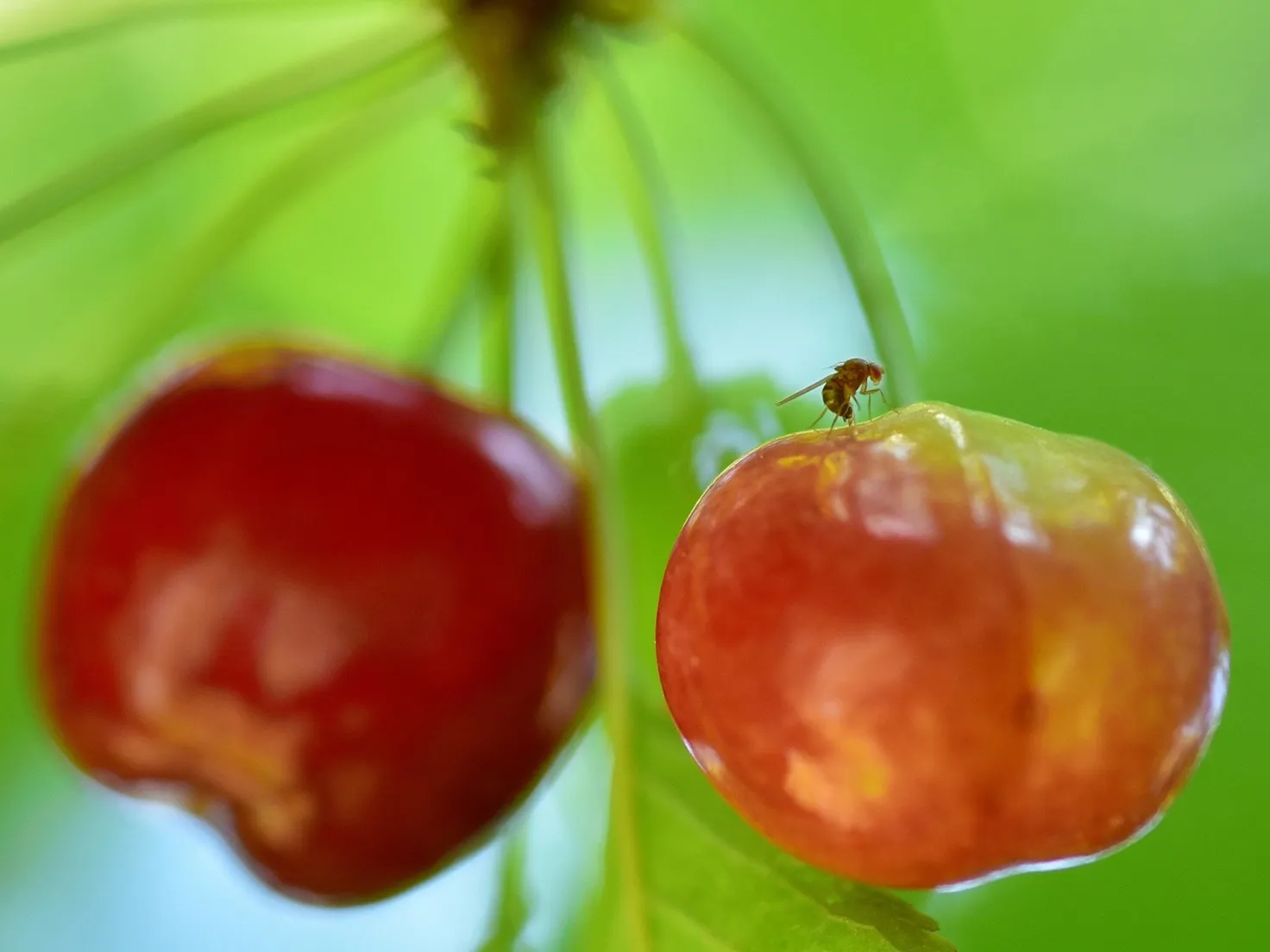The unregulated spread of Drosophila suzukii represents a danger especially for small fruits. Chemical interventions are normally used to control this insect, but the use of these synthetic molecules is very often controversial. Essential oils, on the other hand, have been identified as potential bioinsecticides due to their natural origin but also their biodegradability and mode of action.
In previous research, the insecticidal effects of geranium, dill and Scots pine essential oils have been documented through oviposition deterrence, mortality and repellency. It was decided to formulate a combination of these compounds and to evaluate their impact on D. suzukii by comparing their chemical composition, which differs in the percentage of dominant components, and the mode of action that typically results from synergistic effects.
The use of a combination of various essential oils may often prove more advantageous than their individual application, as the synergistic effect of the combination of essential oils may broaden the range of pests that can be affected, thus improving their overall effectiveness. This is due to the fact that different essential oils can affect different aspects of an insect's biology or behaviour.
Despite the potential use of essential oils in agriculture due to their favourable ecotoxicological characteristics, further research is needed to improve their efficacy, stability and usefulness in practical pest management.
The primary objective of the research conducted in collaboration between the University of Novi Sad (Serbia) and the International Centre for Advanced Mediterranean Agronomic Studies in Bari (Italy) was to develop a bioinsecticide formulation based on the combination of three essential oils:
- Pelargonium graveolens
- Anethum graveolens
- Pinus sylvestris.
The physico-chemical properties of the formulated bioinsecticide were then evaluated. The aim of this investigation was also to assess the insecticidal properties of the newly formulated bioinsecticides on D. suzukii through oviposition deterrence. Of the three formulations tested (all containing the 3 different essential oils, but in different proportions), the one also containing rapeseed oil as emulsifier was used for a two-choice bioassay.
The formulation created demonstrated favourable physico-chemical properties and a reduction in the amount of larvae in the crops. This is due to the fact that the bio-product tested also had a repulsive function against adult females, which avoided ovideposition on the fruit. The result was therefore significantly fewer larvae on the berries than in the control.
This investigation showed that bioinsecticides formulated using a combination of emulsifier, solvent and a mixture of essential oils has the potential to function as a repellent for D. suzukii. Pest control techniques using botanical insecticides containing essential oils are advancing at a rapid pace.
However, further research needs to be conducted under field conditions to gain a more complete understanding of their effectiveness in outdoor environments. Bioinsecticides are an environmentally friendly method of pest management, but there is still a long way to go before their full potential for effective crop protection in the field can be realised.
This should be followed by comprehensive research to assess potential side effects on natural enemies, ensuring that their application does not disturb the ecological balance or harm beneficial organisms.
Source: Dragana Bošković & Slavica Vuković & Sanja Lazić & Nuray Baser & Mihaela Kavran & Dragana Novaković & Aleksandra Šušnjar & Jelena Ećimović & Milica Stožinić & Dragana Šunjka, 2024. "Biopesticide formulation based on essential oils in Drosophila suzukii management as a future of pest control," Plant Protection Science, Czech Academy of Agricultural Sciences, vol. 60(3), pages 288-294.
Image: SL Fruit Service
Melissa Venturi
University of Bologna (IT)
Cherry Times - All rights reserved











